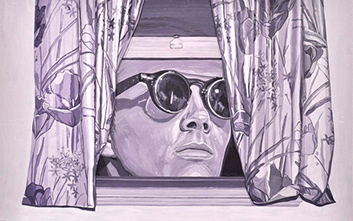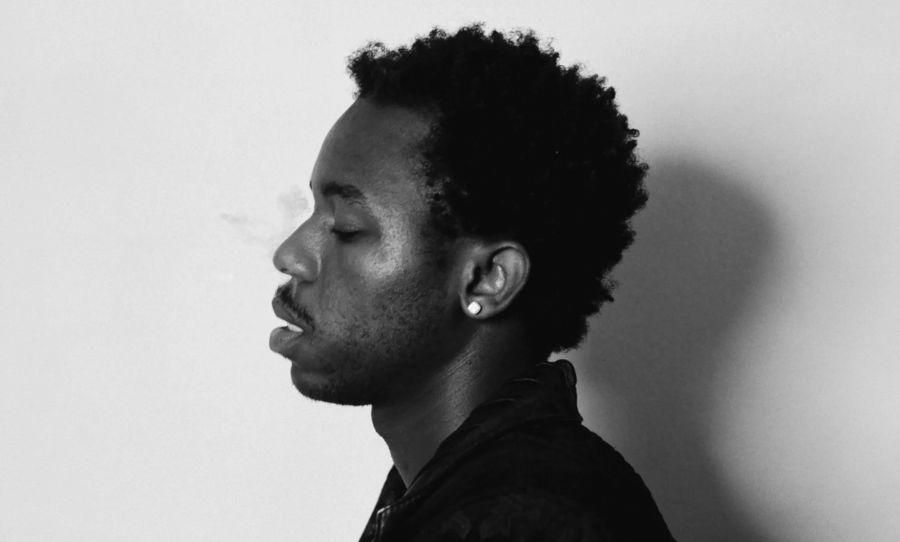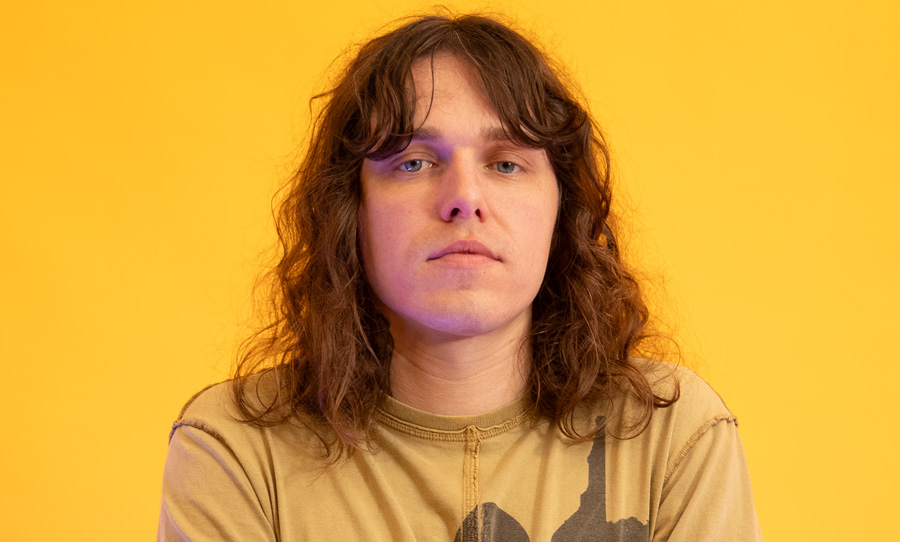For art that draws you into an ethereal, technicolour reality, look no further than Brad Rusbridge. His unique, surreal style has encapsulated many an audience, and there’s no mistaking why.
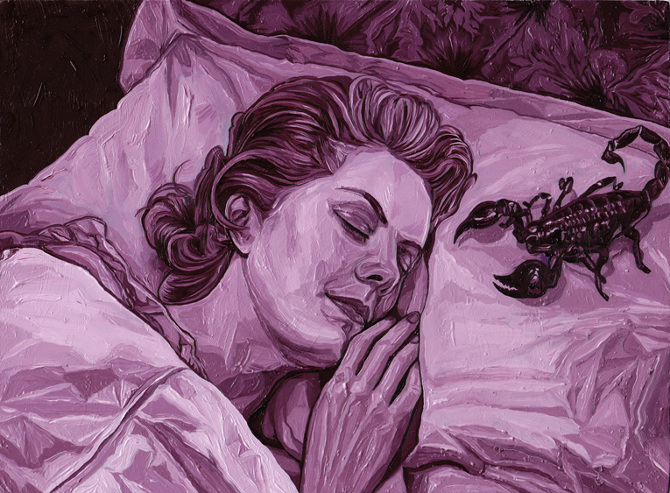
Witness Brad Rushridge, an artist delving into his own disquiet about issues from death and capitalism to self absorption and the mysteries of the cosmos.
Ever had that feeling of trying to recall a vivid dream – where all you can make of it is a heady stream of vaguely familiar snapshots? That is Brad Rusbridge – and that is Dream Sequence.
Partly inspired by the use of the dream sequence in film and television, Rusbridge describes his latest work as showing “a different side to my psyche, one that I normally wouldn’t want to necessarily talk about”.
For Dream Sequence, and most of his other work, Rusbridge has a unique creative process, and this is perhaps part of his appeal as an artist:
“I’m not someone who has the concept first and builds a suite of paintings around it,” he says. “It is only afterwards when I start to psychoanalyse myself that I attached meanings. Working from pre-existing images, cutting them up, rearranging them, combining them with other images, trying to find a new narrative.”

Rusbridge is especially influenced by old photographs, and these – though you may not notice because they’re so expertly reworked – feature quite often throughout his work.
He also tackles the pressing practical issue of colour in a unique way. A common thread throughout all his pieces is their monochromatic palettes – washes of single colours in different shades and tints that contribute the omnipresent otherworldliness of his work.
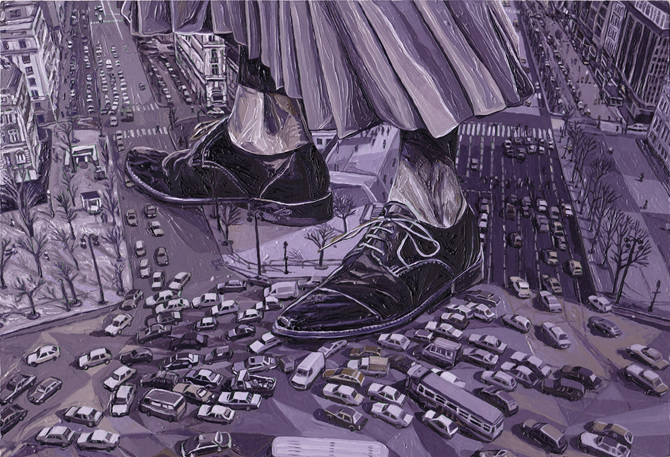
Inspired by painters like Luc Tuymans and Sarah Hendy, Rusbridge tells us that this came from a desire to add another psychological dimension to his pieces, and to bring extra focus to the subject matter at hand.
“Colour can play subliminally on the emotions,” he says, and whether it’s the presence of the past lingering through old cut up photos, the ambiguous, thought-provoking psychological concepts or the moody, washed-out use of colour, there’s no denying that there is something about Rusbridge’s work that you can’t help but feel drawn to. It is this magnetism that makes it so powerful.
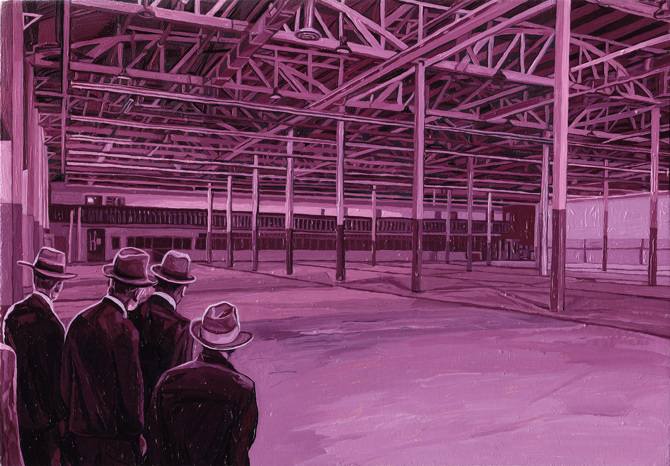
Each piece has an underlying feeling of discontent, ponderousness and self-awareness throughout it, and Dream Sequence is no different. When we asked Rusbridge what words of wisdom he would impart to the world about his pieces, he cryptically replied, “the best insight is not the one that first comes into your mind when you look at them…it is the one that comes to you later, on the tram on the way home.”
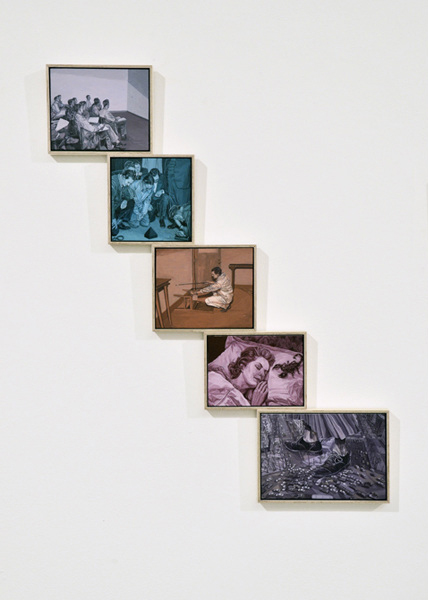
With an impressive body of work already under his belt, Rusbridge is showing no signs of slowing down. He has recently begun to create fully abstract paintings, similar to his other work, but at the same time entirely different.
“The references [in my new works] are fragmented beyond recognition,” he says. “I think of them as mind maps. I’ve done two so far. One is a calm mind, a nice pale-peach colour with just a few bits of architecture floating in it, the other is a very crowded mind, it looks like the inside of a hoarder’s house.”

Before you dive into his new works, make sure you check out Dream Sequence, exhibiting at C3 art space in Abbotsford, Melbourne now.
